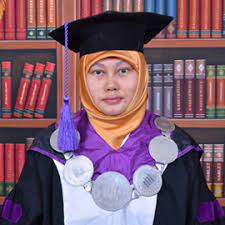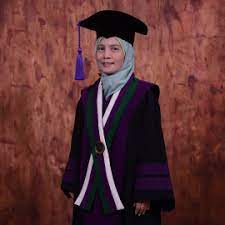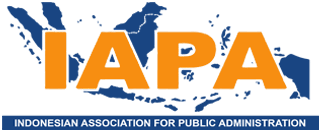ANALISIS PEUBAH KONSUMSI PANGAN DAN SOSIAL EKONOMI UNTUK MENENTUKAN INDIKATOR KELAPARAN
DOI:
https://doi.org/10.30997/jsh.v2i2.94Abstract
Aim of the study was to analyze food consumption and socio-economic parameters in order for determine starvation indicators. The study was designed in a cross sectional method and samples collected in gradual cluster. First cluster consisted of four sub districts with eight selected-villages and as many as 233 samples were withdrawn from the eight villages for analyzing in discrimination method. If rice were used as starvation indicator, 48.5% of samples suffered starvation. The study resulted that 85% of the samples ate twice daily while 15% of the samples ate three times in a day. According to frequency of food consumption as starvation indicator, the samples did not suffer from starvation. In addition, the study showed that 45.8% samples of city areas which the member more than four people suffered starvation and so did the 68.1% samples lived in villages which the member more than four people. Moreover, 15% of husband which bachelor degree holders lived in city areas and 1.8% of husband which bachelor degree holders lived in villages did not suffer from starvation. As many as 45% of heads of families whose work as government employees at city areas and 2.7% of heads of families whose work as government employees at villages did not suffered from starvation. Based on food expenses criteria used as a starvation indicator, 32.5% samples lived at city areas and 83.2% samples lived at villages were suffer from starvation. The study showed that high sensitivity at either cities or villages occurred on bachelor degree holders and government employee’s criteria, and contrary, the high specificity at either cities or villages occurred on government employee’s criteria when food expenses criteria used as a gold standardReferences
Badan Penelitian dan Pengembangan Kesehatan. 1999. Metodologi Penelitian Kesehatan. Badan Penelitian dan
Pengembangan Kesehatan Pusat Penelitian Penyakit Tidak Menular, Departemen Kesehatan RI. Jakarta.
Den Hartog AP, WA van Staveren and ID Brouwer. 1995. Manual for Social Surveys on Food Habits and Consumption in Developing Countries. Margraf Verlag, Weikersheim.
FAO (Food an Agriculture Organization). 2005.
Pacts of Hunger www.ffhresource.org
FAO (Food and Agriculture Organization).
Report of the World Food Summit 13-
November 1996 (Part One). Roma,.
Fraenkel and Wallen. 1993. How To Design and Evaluate Research in Education Second Edition. New York. Mc. Graw-Hill.Inc
Huberman AM and Miles MB. 1992. Analisis Data Kualitatif. Penerbit Universitas Indonesia, Jakarta.
Irawan PB dan A Sutanto. 1999. Impact of the Economic Crisis on the Number of Poor People. Makalah dipresentasikan International Seminar on Agricultural Sectors During the Turbelence of Economic Crisis: Lessons and Future Direction. The Centre for the Agro-Socioeconomic Research (CASER), Agency for Agricultural. Research and Development, Ministry of Agricultural, Bogor, 17-18 Februari 1999.
Palte JGL. 1978. Metode Penelitian Sosial Ekonomi (terutama survai). Catatan Kuliah Stensilan
Priyono S dan Soerata M. 2005. Kiat Sukses
Wirausaha.Palem Pustaka,Jogjakarta
Ritzer G. 1992. Sociology: A Multiple Paradigm Science (revised edition), Boston: Aliyn and Bacon, Inc.
Setiawan B dan Muntaha A. 2000. Metode Penelitian Komunikasi.Pusat Penerbitan Universitas Terbuka, Jakarta.
Singarimbun M dan Effendi S. 1995. Metode
Penelitian Survey. Penerbit LP3ES, Jakarta.
Walpole RE. 1995. Pengantar Statistik. Penerbit
PT Gramedia Pustaka Utama, Jakarta.
Pengembangan Kesehatan Pusat Penelitian Penyakit Tidak Menular, Departemen Kesehatan RI. Jakarta.
Den Hartog AP, WA van Staveren and ID Brouwer. 1995. Manual for Social Surveys on Food Habits and Consumption in Developing Countries. Margraf Verlag, Weikersheim.
FAO (Food an Agriculture Organization). 2005.
Pacts of Hunger www.ffhresource.org
FAO (Food and Agriculture Organization).
Report of the World Food Summit 13-
November 1996 (Part One). Roma,.
Fraenkel and Wallen. 1993. How To Design and Evaluate Research in Education Second Edition. New York. Mc. Graw-Hill.Inc
Huberman AM and Miles MB. 1992. Analisis Data Kualitatif. Penerbit Universitas Indonesia, Jakarta.
Irawan PB dan A Sutanto. 1999. Impact of the Economic Crisis on the Number of Poor People. Makalah dipresentasikan International Seminar on Agricultural Sectors During the Turbelence of Economic Crisis: Lessons and Future Direction. The Centre for the Agro-Socioeconomic Research (CASER), Agency for Agricultural. Research and Development, Ministry of Agricultural, Bogor, 17-18 Februari 1999.
Palte JGL. 1978. Metode Penelitian Sosial Ekonomi (terutama survai). Catatan Kuliah Stensilan
Priyono S dan Soerata M. 2005. Kiat Sukses
Wirausaha.Palem Pustaka,Jogjakarta
Ritzer G. 1992. Sociology: A Multiple Paradigm Science (revised edition), Boston: Aliyn and Bacon, Inc.
Setiawan B dan Muntaha A. 2000. Metode Penelitian Komunikasi.Pusat Penerbitan Universitas Terbuka, Jakarta.
Singarimbun M dan Effendi S. 1995. Metode
Penelitian Survey. Penerbit LP3ES, Jakarta.
Walpole RE. 1995. Pengantar Statistik. Penerbit
PT Gramedia Pustaka Utama, Jakarta.
Downloads
Published
2011-10-20
How to Cite
bakar, abu. (2011). ANALISIS PEUBAH KONSUMSI PANGAN DAN SOSIAL EKONOMI UNTUK MENENTUKAN INDIKATOR KELAPARAN. Jurnal Sosial Humaniora, 2(2). https://doi.org/10.30997/jsh.v2i2.94
Issue
Section
Articles

















